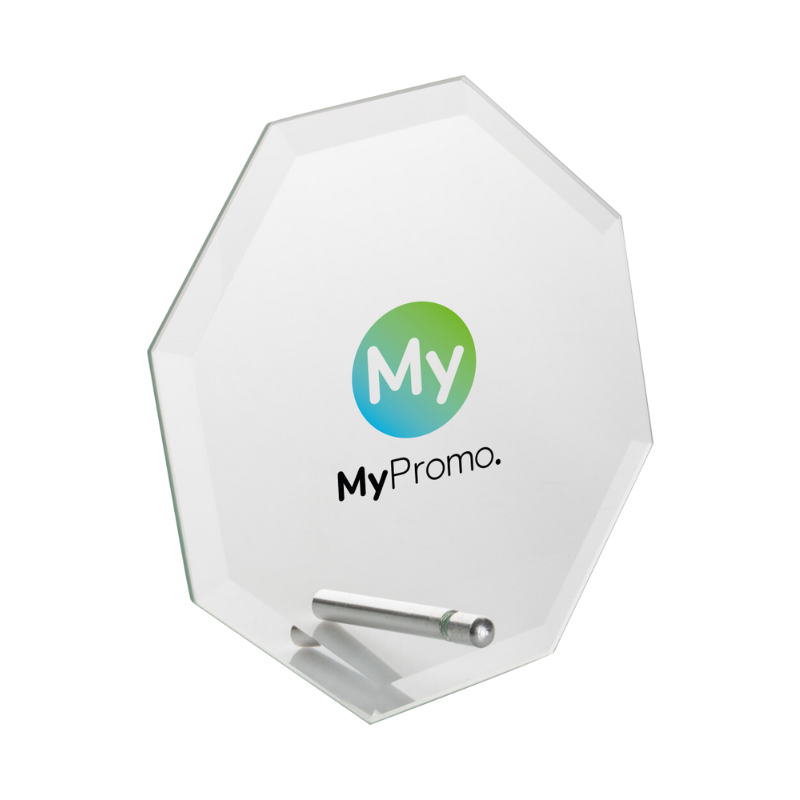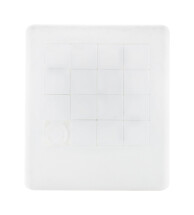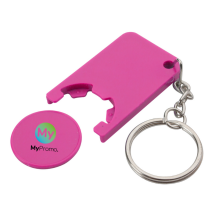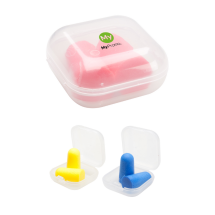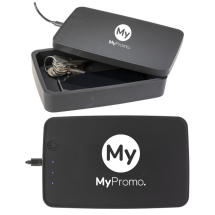UV LED printing
What is UV LED Printing
UV LED printing is a modern printing technique that utilizes ultraviolet (UV) light-emitting diodes (LEDs) to cure or dry ink as it is printed. This method is particularly important in the printing and promotional gifts world due to its efficiency, versatility, and high-quality results.UV LED printing works by using UV light to instantly cure the ink, making it dry immediately upon contact with the printing surface. This allows for faster production times and the ability to print on a wide range of materials, including those that are heat-sensitive.
Historically, traditional printing methods relied on solvents and heat for drying, which often took longer and could be less environmentally friendly. The development of UV LED printing revolutionized the industry by offering a faster, cleaner, and more sustainable option.
The basic process of UV LED printing begins with the digital design of the image or text to be printed. This design is then transferred to the printing machine, which uses UV LED lights to cure the ink as it is applied to the material. The UV light instantly solidifies the ink, resulting in a high-quality, durable print that is resistant to smudging and fading.
Tools and Materials Needed for UV LED Printing
The primary tools and materials needed for UV LED printing include a UV LED printer, UV-curable inks, and the substrate or material to be printed on. The printer is equipped with UV LED lamps that cure the ink instantly. UV-curable inks are specially formulated to react with UV light, allowing them to dry quickly and adhere strongly to the printing surface. Common substrates used in UV LED printing include paper, plastics, glass, metal, and even wood.
Applications and Examples of UV LED Printing
UV LED printing is widely used for various applications, particularly in the realm of promotional products and personalized items. Examples include custom phone cases, personalized pens, personalized water bottles, personalized awards and trophies, and bespoke packaging. This technique is popular for producing high-quality, vibrant prints that can withstand wear and tear, making it ideal for items that are frequently handled or exposed to the elements.
Advantages of UV LED Printing
One of the main advantages of UV LED printing is its speed. Because the ink dries instantly, production times are significantly reduced. Additionally, UV LED printing produces high-quality, vibrant colors and sharp details, making it ideal for intricate designs and detailed artwork. It is also environmentally friendly, as it does not release volatile organic compounds (VOCs) into the air, unlike traditional solvent-based printing methods.
Furthermore, UV LED printing is versatile. It can print on a wide range of materials, including non-porous surfaces that are difficult to print on using other methods. This versatility makes it a popular choice for creating custom and promotional items.
Comparing UV LED Printing to Other Techniques
Compared to traditional printing techniques such as offset or screen printing, UV LED printing offers several unique features. While offset printing is ideal for large-volume jobs and produces consistent, high-quality results, it requires longer setup times and is less flexible when it comes to printing on different materials. Screen printing, on the other hand, is great for printing on fabrics and other uneven surfaces but is not as detailed and vibrant as UV LED printing.
UV LED printing stands out due to its ability to produce high-quality prints quickly and on a variety of materials. However, it may have limitations, such as higher initial equipment costs and potential maintenance requirements for the UV LED lights.
Challenges and Limitations
While UV LED printing offers many benefits, it also has some potential challenges and limitations. The initial cost of UV LED printers and UV-curable inks can be higher than traditional printing equipment. Additionally, maintaining the UV LED lights and ensuring they remain effective can require ongoing attention and potential replacement over time.
Despite these challenges, the advantages of UV LED printing, including speed, quality, and versatility, make it a valuable technique in the printing and promotional gifts industry. As technology continues to advance, UV LED printing is likely to become even more efficient and accessible, further solidifying its place as a leading printing method.
| Feature | UV LED Printing | Offset Printing | Screen Printing |
|---|---|---|---|
| Setup Time | Short setup time | Long setup time | Medium setup time |
| Print Quality | High-quality, vibrant colors, sharp details | Consistent, high-quality results | Good for solid colors, less detail-oriented |
| Drying Time | Instant drying | Requires drying time | Requires drying time |
| Versatility | Prints on a wide range of materials | Primarily paper and similar substrates | Excellent for fabrics and uneven surfaces |
| Environmental Impact | Environmentally friendly, no VOC emissions | May use solvents, emits VOCs | May use solvents, emits VOCs |
| Cost | Higher initial equipment costs | Lower initial costs for large volumes | Moderate initial costs |
| Maintenance | Regular maintenance of UV LED lights required | Maintenance of printing plates and rollers | Maintenance of screens and inks |
| Production Speed | Fast production times | Slower due to longer drying times and setup | Medium production speed |
| Durability | Highly durable, resistant to smudging and fading | Durable but can be prone to smudging if not handled properly | Durable, especially on textiles |
| Applications | Promotional items, packaging, signage, custom items | High-volume commercial print jobs, magazines, brochures | T-shirts, banners, posters, textiles |
What is UV LED printing?
UV LED printing is a modern printing technique that uses ultraviolet (UV) light-emitting diodes (LEDs) to cure or dry the ink instantly as it is printed. This method allows for high-quality, durable prints on a wide variety of materials.
What materials can be used with UV LED printing?
UV LED printing is highly versatile and can be used on a wide range of materials, including paper, plastic, glass, metal, wood, and fabric. This makes it ideal for producing promotional products, packaging, and custom items.
Is UV LED printing environmentally friendly?
Yes, UV LED printing is considered environmentally friendly. It uses inks that do not emit volatile organic compounds (VOCs) and the UV LED curing process is energy-efficient, reducing the overall environmental impact compared to traditional printing methods.
What types of products are commonly made using UV LED printing?
Common products made using UV LED printing include custom phone cases, promotional pens, branded water bottles, personalized awards and trophies, bespoke packaging, signage, and decorative items. This technique is favored for its ability to produce high-quality, durable prints that enhance the aesthetic appeal of products.
How does UV LED printing compare to other digital printing techniques?
UV LED printing offers several unique benefits compared to other digital printing techniques. Unlike inkjet or laser printing, UV LED printing provides instant drying, superior durability, and the ability to print on a wider range of materials. It also tends to offer higher resistance to scratches and fading, making it suitable for products that require longevity.
